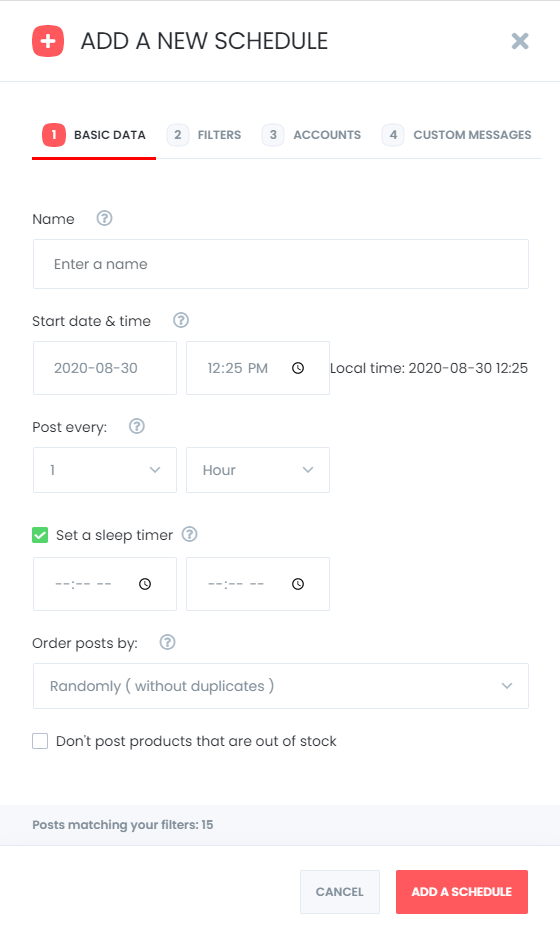Marketing optimization is the process of improving the marketing efforts of a business in order to maximize the ROI. Every marketing channel needs to be involved in the optimization process.
Aside from the overall aim of optimization, conventional and digital marketing require different sets of optimization strategies. The ones that are successful in traditional marketing will not apply to online marketing. The difference between traditional marketing and digital marketing is that in the latter the driving force is content marketing.
The optimization process in traditional marketing strategies is tedious work in terms of the measurability of the marketing campaigns. If businesses use various offline advertising, one cannot be sure about where sales are exactly coming from. So, organizations that want to shift from conventional to digital marketing need to prepare separate marketing optimization techniques.
In digital marketing, optimization strategies are built on monitoring and evaluation of user behavior online. Digital marketing allows to spread into different areas, get data from those channels and optimize those data for more targeted and personalized campaigns.
How digital marketing optimization is done?
Marketing optimization aims for generating better business outcomes for a brand or product. You want to squeeze best-performing channels and modify the lacking areas.
So, you have to be sure about why you are opting for marketing optimization techniques. Is it for increasing website traffic, is it for increasing conversions or closing rates? Because, the key data you will be looking at, your resources and actions to be taken depend on what you are optimizing for.
1. Collect and analyze data
The major sources for collecting data in digital marketing optimization are:
- Search Engine Optimization
- Search Engine Marketing and Pay-Per-Click marketing
- Social Media Marketing
- Influencer marketing
- Content marketing
- Email marketing
- Affiliate marketing
Each of these sources contains sub-categories and relative KPIs to look for. Through them, marketers collect data about website traffic, campaign clicks, impressions, conversion rates, which type of content and keywords drive more clicks, and what time of day works for specific campaigns.
If you aim to increase website traffic the data you should track is:
- Device and browser type
- Through which channels visitors land on your website
- Visit duration
- Campaign URL (for ads)
- Keyword analysis
If you want to measure the conversion rate of your campaigns, you should be looking for:
- Click-through rate
- Unique clicks
- Forms submitted
- Cost per lead
The ultimate goal is to increase sales. The closing is the tricky part. You need to clearly identify how leads behave after reading details of your campaign, at which step they quit purchasing and leave your website. The gathered information will be used to coordinate the sales process. Your major KPIs are:
- Number of Demo booked
- Time to sale
- ROI
- Time to first contact
Once the data collected from mentioned sources it should be analyzed, compared to campaign objectives, previous campaign results and further take the action.
There will be campaigns that cost too much but never pay off, raise social voice but generate few sales, or campaigns that get high impressions but very few clicks. These are the things that can be modified with comprehensive analysis.
The analysis is a challenging part of the optimization process involving multiple platforms, analytic tools, and visual illustration of collected data. There are lots of free and paid tools required for the analysis of individual parameters.
Google Analytics
Google Analytics is great to get insight into paid and organic traffic, sources of traffic, demographics of the audience, most visited pages. Although these are important for analysis they are not enough to draw a big picture of the marketing optimization process.
Google Search Console
Google Search Console is a great tool for optimizing website visibility. It gives comprehensive data about website clicks, impressions, CTR, the average duration for the whole website and individual pages.
Facebook Business Suite
With Facebook Business Suite, you can analyze the performance of social media marketing on Facebook and Instagram. It helps to view reach, engagement, link clicks. Ads Manager provides in-detail data of paid campaigns including offline conversions, targeting, cross-device behavior, app engagement that are not visible with Google Analytics.
There are more advanced social monitoring tools that give an analysis of keywords or hashtags, reports of multi-platform campaigns, employee performance.
Keyword optimization tools
Keywords are literally a key part of digital marketing optimization. They help to appear on top of search results. Choosing the right keyword helps to be precise in targeting the audience and thus more likely to bring sales.
One of the most used keyword tools SEMrush provides information about keyword volume across countries, its difficulty level, CPC, keyword variations, related keywords, organic keyword competitors. Ahrefs is another great keyword optimization tool giving data about keyword clicks, clicks per search, cost per click, SERP features, return rate. Considering the competition over short keywords, Ubersuggest provides long-tail keywords, their PPC and SEO competition, content ideas over the keywords.
2. Refine your marketing strategies
Once the data is collected and analyzed it should be modified according to your marketing optimization goals. Your marketing team has to clearly understand the challenges of your marketing and figure out how to change the statistics.
Re-define your marketing strategy
Do your paid campaigns really convert, do you get enough engagements on social media, do your blog page gets clicks? Your analysis should cover these questions.
If email marketing has never brought any sales why you should keep paying for dead leads. On the other hand, if social media works pretty well in driving website traffic why not go after social media optimization.
Run A\B tests
If you are still confused about your findings then testing will clear things. A\B testing is a research methodology where two versions of content are shown to users to determine which option generates better outcomes. The testing can be done for social media, website ads and email marketing. You are allowed to change only one element and show it randomly to the users.
You can test design and layout, headlines, website copy, navigation, call-to-action. As part of social media optimization, you can test post visuals, descriptions, and the best time to post on social media.
Depending on the results of the research you can change the followings:
- Landing page content
- Advertising channels
- Email content
- Call-to-action
- Social media usage
- Messages
3. Automate optimization
After implementing marketing optimization techniques and getting the positive business outcome from them you can look back and define areas where you can automate. Automation will help to simplify processes, minimize errors, analyze metrics and get things done simultaneously.
Social media is one of the major areas where marketing optimization can be automated. With social media optimization strategies, you found how to improve the quality of your content, how to engage with followers, the networks that add value and business opportunities for each platform.
As part of the engagement, you also know how to reach out to your customers, in which hours or days to contact them. The rest is to automate your findings in a smart way.
Thankfully, there is a countless number of WordPress auto-poster plugins for the facilitation of social media experience. They help to modify posting intervals and provide content according to your pre-defined post scheduling.
The main benefits of auto-poster plugins are that they keep your feed active, allow followers to get fresh content, and view your social presence in a timely manner. They also contribute to your editorial plan where you can track your published content performance and refine your further content strategy based on that.
With auto-posting to social media, you will achieve your social media optimization goals. FS-Poster is a WordPress scheduler plugin designed for businesses to automate social media posts. The social network auto poster allows to schedule an unlimited number of posts on profile feed, social media groups at the same time.
While using the FS Poster auto-posting plugin you are not going to care about how often to post on social media. The WordPress scheduler plugin will assist you to schedule posts on social media and keep your posting frequency.
The Schedule module allows users to share old and new posts and gives intervals for each social media channel. By adding post names, dates, and times you can easily schedule posts on social media.
After your optimization analysis, you found that each platform requires individual messaging. With Custom messages, you can customize the description of the shared post for each platform by adding relevant keywords.
The overall functionality helps to keep your feed fresh and enhance engagement across multiple networks.
Final thoughts
In this blog, we talked about why marketing optimization is important and how it can be achieved with the implementation of the right marketing strategies. We found that having a range of marketing channels does not generate business outcomes.
You need to constantly keep track of your marketing efforts and make changes regarding the performance of your campaigns. If you have not started applying optimization in marketing there is a chance that you are running some sort of wrong strategies.
___
by Nasimi from FS Code Marketing






